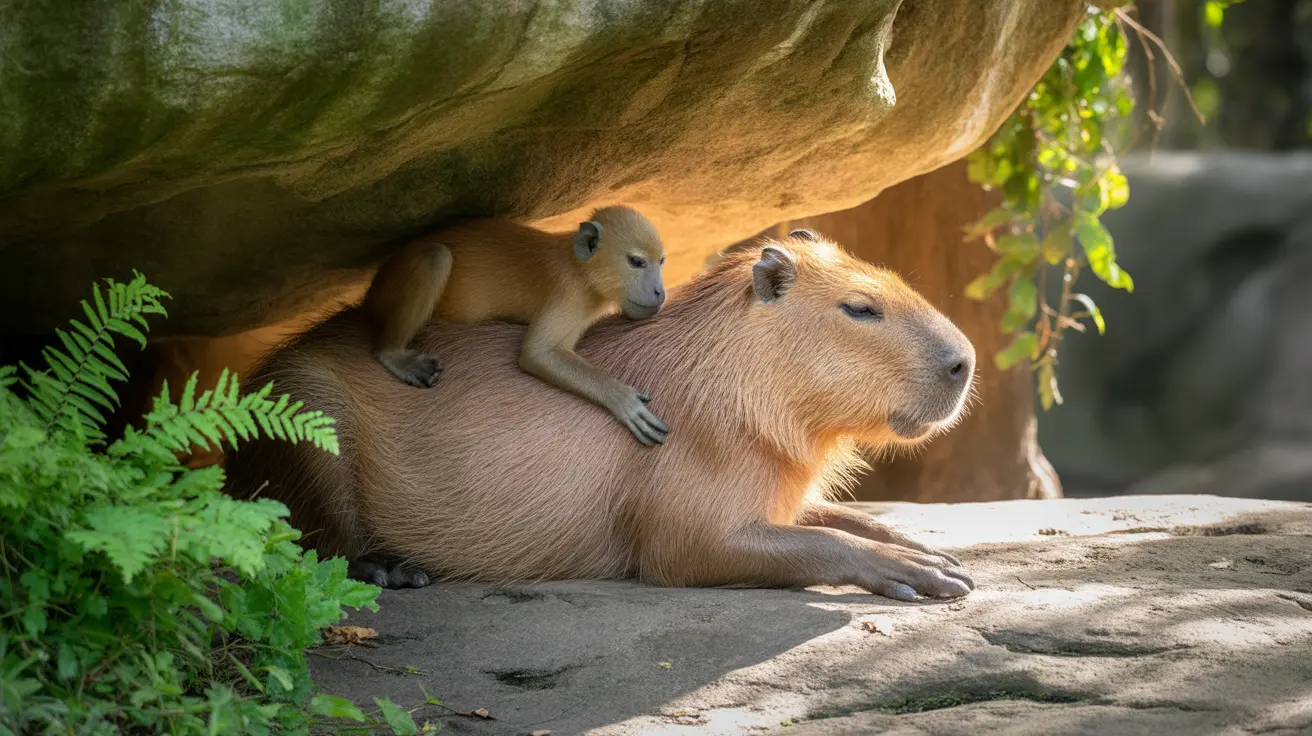Unusual Zoo Animal Bonds Create Special Connection
The friendship between these two species is particularly noteworthy because such interactions rarely occur in nature. While both animals are native to similar geographical regions in South America, their natural behaviors and habitats typically keep them apart – howler monkeys spend most of their time in the treetops, while capybaras are ground-dwelling and semi-aquatic.
Capybara Social Habits Support Unique Partnership
Rebecca the capybara exemplifies the species' renowned calm nature, living up to their reputation as "nature's universal moms." Capybaras are known for their gentle temperament and social flexibility, making them ideal companions in mixed-species environments. This natural disposition has played a crucial role in fostering the unexpected friendship with Baya.
Zoo Animal Enrichment Programs Foster Positive Relationships
The Denver Zoo's innovative approach to animal care and enrichment has created an environment where such unique bonds can flourish. By carefully managing mixed-species exhibits, the zoo provides opportunities for positive social interactions that contribute to the animals' psychological well-being.
Emotional Support Animals in Zoos
What makes this relationship particularly special is how both animals appear to provide emotional support for each other. Baya often seeks comfort from Rebecca, demonstrating that even in controlled environments, animals can form meaningful connections that enhance their quality of life.
Tropical Discovery Exhibit: A Home for Unique Friendships
The zoo's Tropical Discovery exhibit has become more than just a habitat – it's a space where unusual friendships can develop naturally. The careful design of mixed-species enclosures allows for safe interactions while maintaining each animal's essential needs and comfort.
Frequently Asked Questions
How did the howler monkey and capybara become best friends at the Denver Zoo?
Their friendship developed after Baya, the howler monkey, and Rebecca, the capybara, were housed together as the only two females among several males in the Tropical Discovery exhibit, where they began snuggling, grooming, and riding on each other, forming a rare interspecies bond.
Is it common for howler monkeys and capybaras to interact or form friendships in the wild?
No, it is highly unusual because howler monkeys are arboreal and mostly stay in trees, while capybaras are terrestrial and semi-aquatic. Their natural habitats overlap geographically, but they rarely interact closely in the wild.
What behaviors do Baya the howler monkey and Rebecca the capybara display that show their friendship?
They engage in snuggling, mutual grooming, and piggyback rides, with Baya often seeking comfort from Rebecca. These affectionate behaviors are highly rare between these species, especially in mixed-species zoo settings.
A Testament to Animal Social Intelligence
This heartwarming friendship between Baya and Rebecca serves as a reminder of animals' capacity for forming meaningful social bonds, even with species they wouldn't typically interact with in nature. Their story highlights the success of modern zoo practices in creating enriching environments that allow for such extraordinary relationships to develop.
The unique bond between these two different species continues to delight visitors and demonstrates the complexity of animal social behavior. It stands as a testament to the importance of social connections in promoting animal welfare and happiness within zoo environments.






